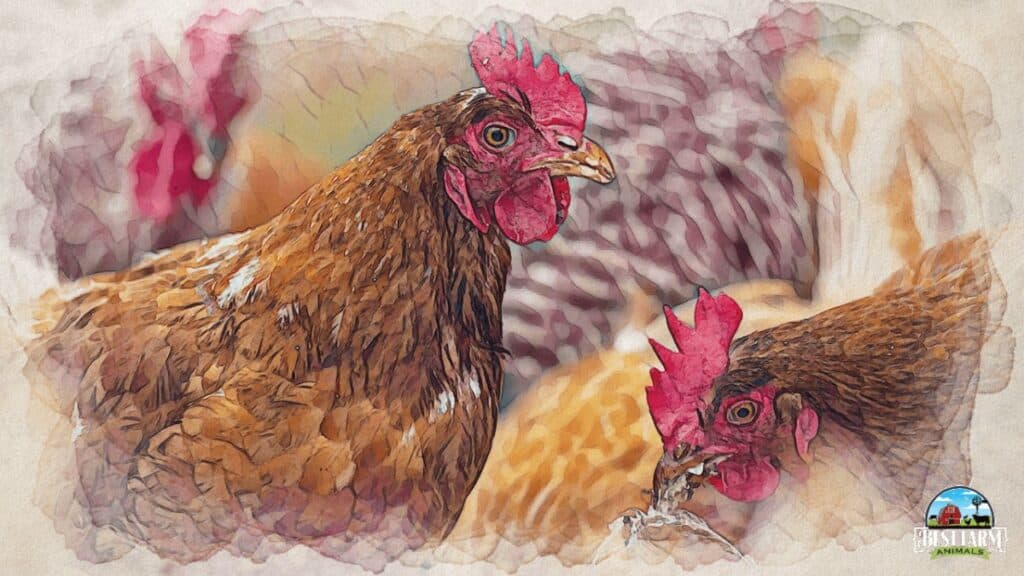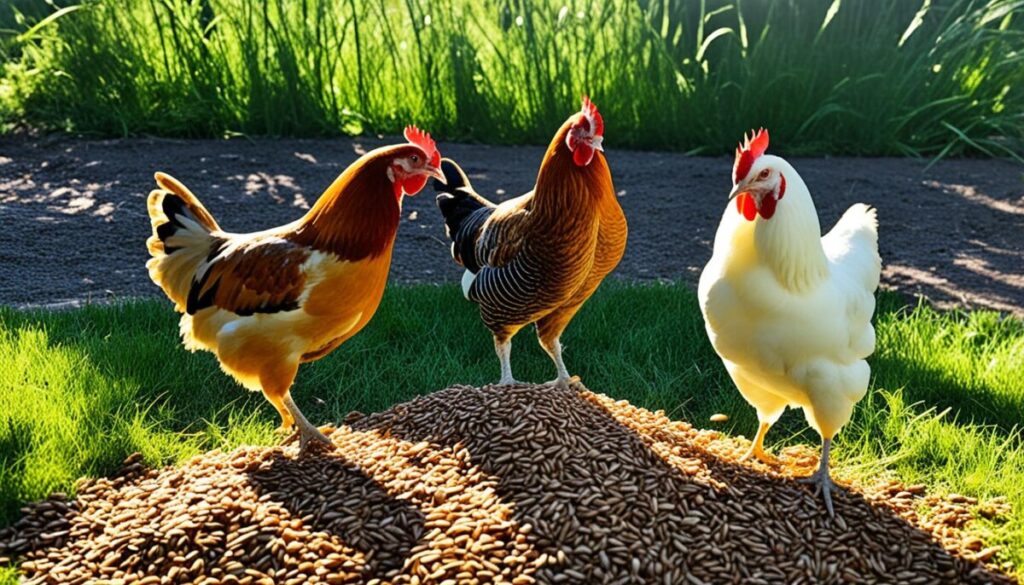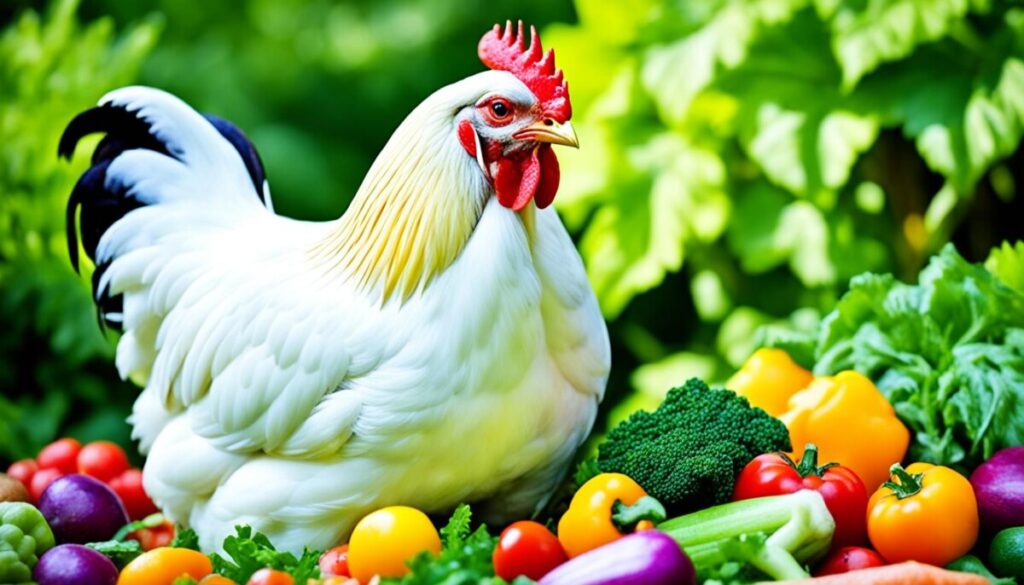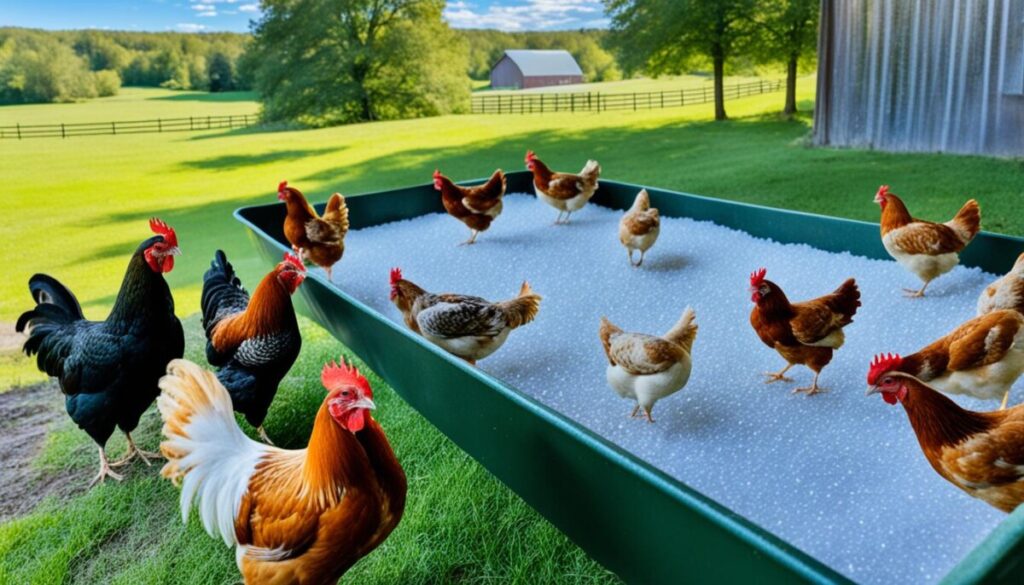Understanding Chicken Health Basics
Raising a flock of chickens can be a delightful experience, offering not just a source of fresh eggs but also a way to connect with the cycle of life in a very hands-on way. However, to ensure your chickens lead healthy, happy lives, it’s essential to have a foundational understanding of their health needs. Here, we delve into the basics of chicken health, covering anatomy, common health issues, and the hallmarks of a thriving chicken.
Skip Ahead
Keeping Chickens Healthy Articles:
Can Chickens Eat Flax Seeds
Can Chickens Eat French Fries
Can Chickens Eat Fish
Can Chickens Eat Expired Food
Can Chickens Eat Egg Noodles
Can Chickens Eat Epsom Salt
Anatomy of a Chicken
Understanding a chicken’s anatomy is crucial for identifying when something might be wrong. Key areas to be familiar with include the comb and wattles (which can indicate health status through their color and condition), the eyes (should be clear and bright), the feathers (should be full and clean), and the legs and feet (should be sturdy and free from lesions or swelling). Additionally, being aware of their digestive system, respiratory system, and reproductive system can help in noticing abnormalities early.
Common Health Issues
Chickens can face a variety of health issues, many of which are preventable with proper care. Some of the most common include:
- Parasites: Both external (like mites and lice) and internal (such as worms) parasites can afflict chickens, impacting their well-being and productivity.
- Respiratory Diseases: Conditions like avian influenza and mycoplasma can cause coughing, sneezing, and breathing difficulties.
- Nutritional Deficiencies: A lack of essential nutrients can lead to issues like weak eggshells, poor growth, and reduced immunity. Common deficiencies include calcium, vitamin D, and protein.
- Infectious Diseases: Diseases such as fowl pox, Marek’s disease, and Newcastle disease can spread quickly through a flock, often with devastating effects.
Signs of a Healthy Chicken
A healthy chicken is active, alert, and engaged with its surroundings. The feathers are smooth, clean, and lustrous, indicating good nutrition and grooming behavior. Eyes should be bright and clear, free from discharge. The comb and wattles are vibrant and red, showing no signs of paleness or discoloration, which can indicate blood circulation and overall health status. Regular egg production is another sign of good health in laying hens, with consistent egg size, shape, and shell quality.
By keeping a keen eye on these aspects of your chickens’ health, you can catch many potential issues before they become serious. Regular observation and a bit of preventive care can go a long way in ensuring your flock remains healthy and happy. In the next sections, we’ll explore how diet, environment, and proactive management can support these health basics, creating a thriving environment for your feathered friends.
How to Keep Your Chickens Healthy
- Make sure you clean their feed and water dishes. You don’t want them getting sick from eating or drinking something they shouldn’t.
- Ward off bacteria. Add one or two tablespoons of apple cider vinegar (ACV) to one gallon of their drinking water. This helps keep unhealthy organisms from growing as well as the green slime that appears now and then. It also helps the chickens digest their food and encourages the good bacteria to grow in their digestive system.
- Provide Freedom. Chickens love to wander and be free. Give them plenty of space to scratch, run, and play. If your chickens aren’t free range provide them with a chicken run if you have room.
- Monitor for issues. Check on your chickens and observe them. Each chicken has a different attitude and personality. If you notice something off, check on them.
- Provide healthy food. Make sure you are giving them feed that is right for them. For example, laying hens need a diet higher in calcium than younger hens. When buying feed, keep the hen’s age in mind, you could use starter feed for chicks, grower feed for birds that aren’t quite laying, and feed higher in calcium for hens that are.
My Favorite Chicken and Duck Supplies
This list contains affiliate products. Affiliate products do not cost more but helps to support BestFarmAnimals and our goal to provide farm animal owners with accurate and helpful information.
Manna Pro Oyster Shell keeps eggs strong. Before I gave my chickens oyster shell, I had the oddest eggs, many with weak and irregular shells. Now, I don’t have an issue.
Layer Feed by Manna Pro. I like pellets rather than crumbles as my chickens eat them better and less gets wasted or scavenged by rodents. A good layer feed makes the difference in hens laying many more eggs.
My chickens love this mealworm treat, which gives added protein, something that’s great during molting and winter months.
There are many ways to feed and water your chickens. I like this food and water setup the best because it reduces waste, saves me time feeding and watering, and keeps the food fresh longer. Except, in the winter, I use a heated waterer. The only problem is the heated waterers need to be replaced every few years.
I love this chicken veggie hanger. It makes it easy to give your chickens produce from the garden and keep them occupied in the winter with a fresh head of lettuce.
These chicken toys are a hoot! They will help curb bullying and keep your chickens active, especially in the winter when hens tend to get more lethargic.







